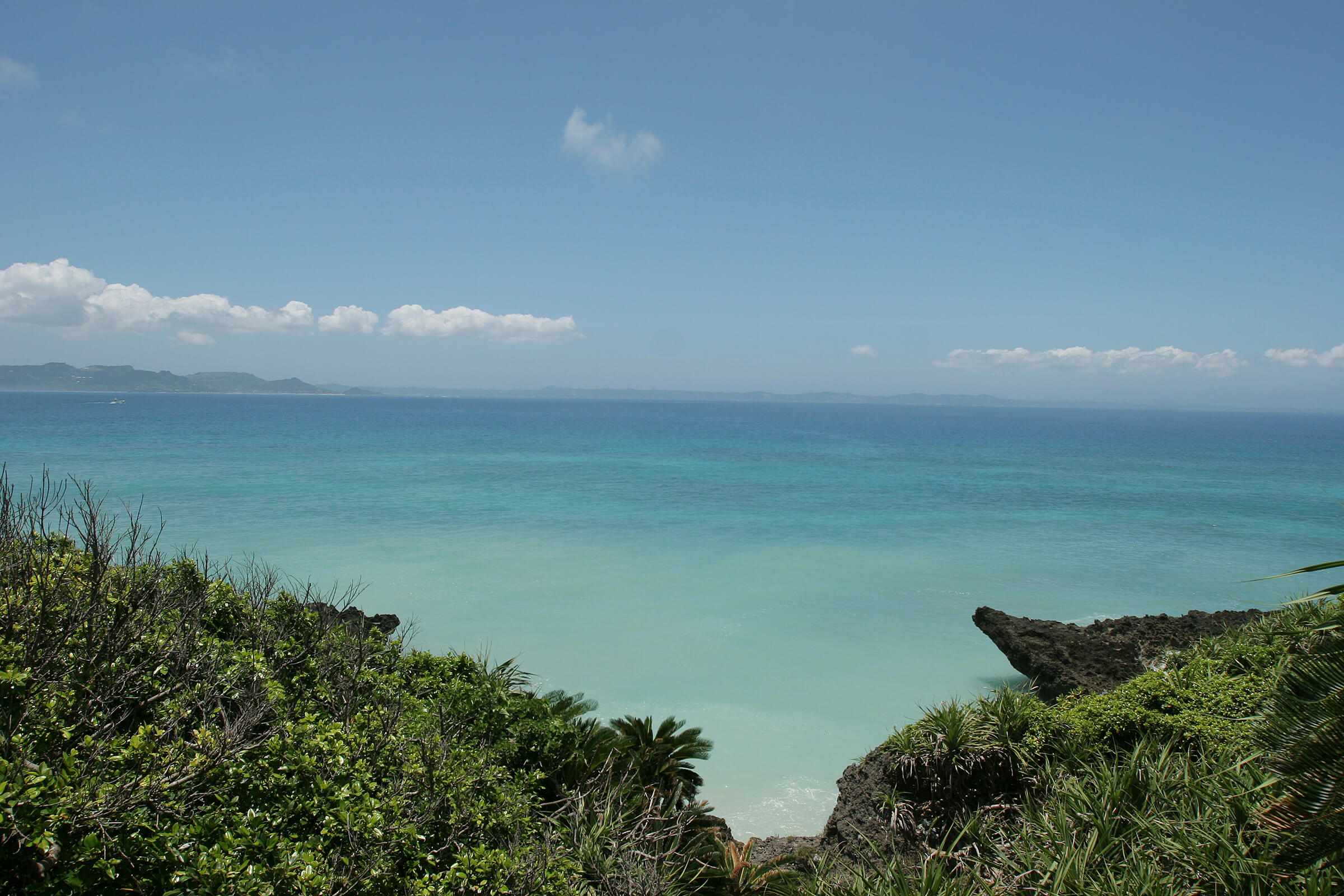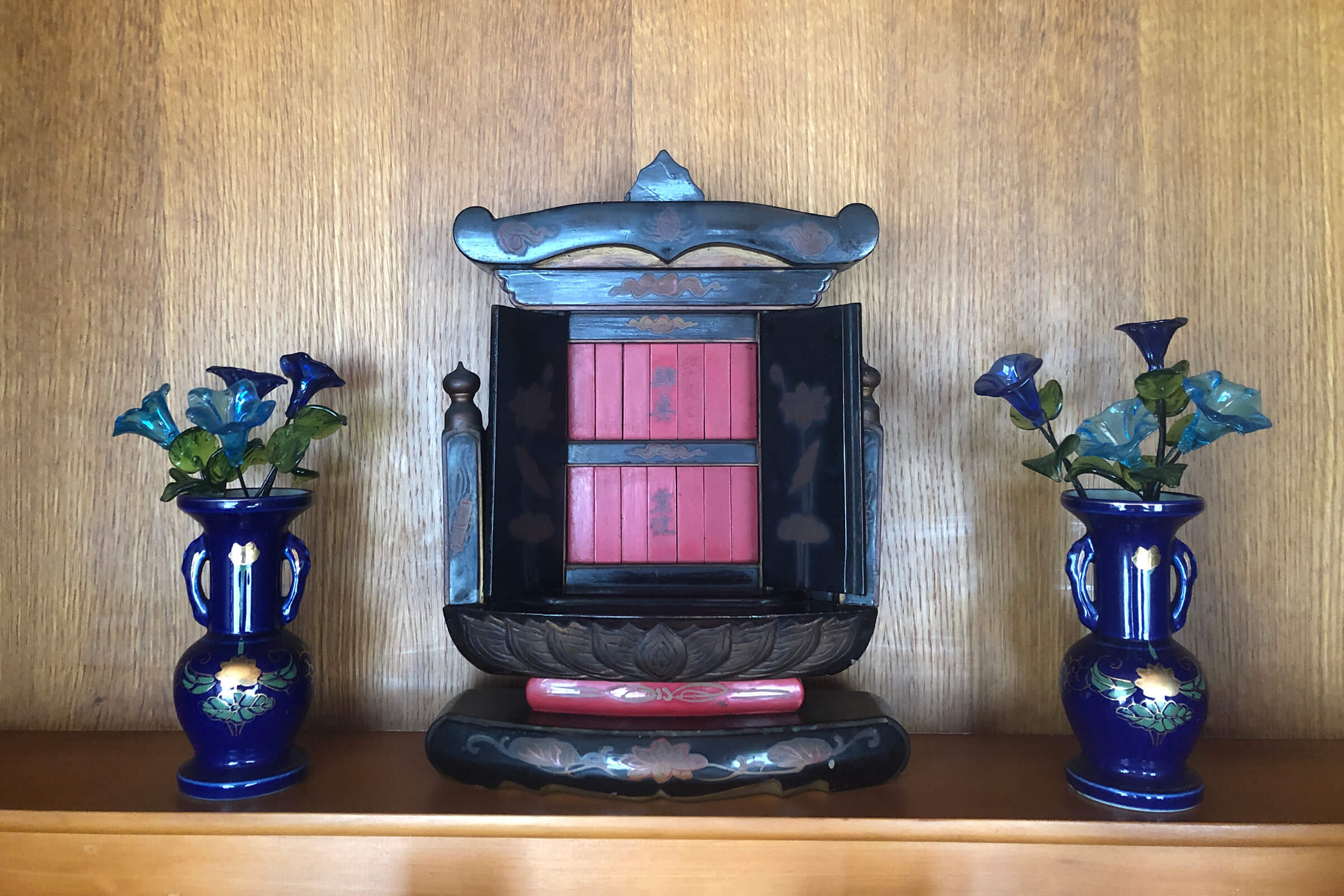ABOUT OKINAWA沖縄について
This World and the Next, View of Death and Life in Okinawa
Everything has its end, but in Okinawa, it is said that the distance between the alive and the not is close. It is because people in Okinawa live with, and celebrate festivals to honor the spirits of their ancestors in daily life. Let's take a look at Okinawan views on life and death.
Niraikanai, where God lives, also a land of the dead

Okinawa is surrounded by the sea, and the benefits of nature have been thought to come from the ocean. From ancient times, Okinawan people image and name the utopia where the gods live “Nirai-kanai” and think it lies far beyond the ocean. People in Okinawa think that nirai-kanai is also the place where the souls of the dead of this world return to reborn, so that worshiping nirai-kanai is an essential element to understand Okinawan views on life and death.
Prayer for to-to-me and the three major ancestor festivals

Along with the worship nirai-kanai, ancestors worship deepened the way of thinking and life of the Okinawan people. People think that the ancestors guide us today’s life and appreciate them. This is the fundamental thought of ancestors worship and honor the spirits of the ancestors. It is very common among Okinawan to pray for the health and well-being of the family members toward hinukan (god of fire) and to-to-me (family altar). It is said that prayer reaches the gods through hinukan, and reaches their ancestors through to-to-me.
There are three major ancestors festivals in Okinawa. Those are the “Jurokunichi-sai,” “Shimi,” and “Old Bon.” As for “Jurokunichi-sai,” it is New Year’s Day for the ancestors. It is held on the 16th day, the day after the first full moon of the new year in the lunar calendar. Okinawan call “guso” for the ancestors’ world, and even gather at the graveside to celebrate guso’s New Year with feasts. The other two festivals are Shimi Festival to honor the ancestors on shimi season which is one of the 24-season calendar imported from China, and Old Bon Festival when they welcome the ancestors with eisa dancing.
These events for the ancestors not only strengthen the bonds with the local community and family, but also teach us the importance of the connection to the ancestors who built the society and lives we rejoice today.
This world and the next are all connected
Fuso, the type of aerial burial once conducted in various parts of the world and as well as in Okinawa including the ritual of bone washing called “senkotsu.” Okinawan see life as one flow of the connection with the ancestors, also to the descendants. Okinawan tombs known as kame-kou-baka is a good example to understand the view of life and death. Looking into the shape of the tomb resembles a woman’s womb, stemming from the belief that people return to their mother’s womb after death. This mentality roots deeply down to the way of Okinawan living, those ritual ceremonies to build its view of death, and makes Okinawan spiritual culture unique until today.
*Please remember, the graves including kame-kou-baka is a holy place, and private sanctuary for each family to pray and gather for their ancestors. Make sure not to enter nor take pictures without permission.
Bibliography
『TOTOメーQ&A 沖縄の年中行事』座間味栄議(むぎ社)
『momoto Vol.24 (琉球・沖縄の死生観)』(モモト編集部)
